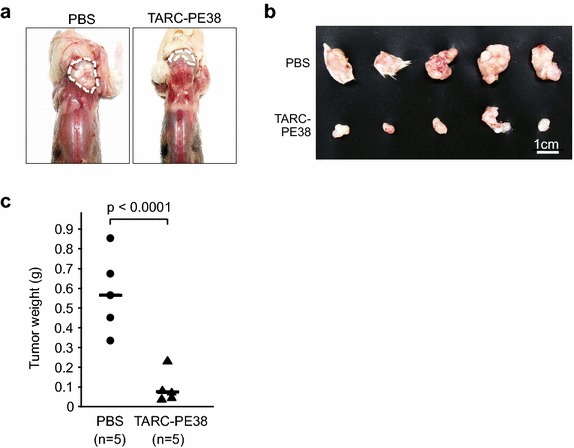Fig. 2.

Antitumor effect of TARC–PE38 in a mouse model bearing an HTLV-1-related tumor. a HUT-102 cells (2 × 107 cells/mouse) were transplanted into the postauricular regions of 10 NOG mice. Either 25 μg/mouse TARC–PE38 or PBS was then administered to the same region once a day on days 1–5 after transplantation (a total of five times). The mice were observed and sacrificed on day 14 after transplantation to assess the therapeutic effect of TARC–PE38 on the solid tumors grown in the same region. The sizes of the tumors were compared among the mice sacrificed. Representative tumors of mice treated with PBS or TARC–PE38 were photographed with a standard digital camera. The tumors are surrounded by wavy lines. b All tumors grown in mice treated with PBS (n = 5, upper line) or TARC–PE38 (n = 5, lower line) were excised from the mice, compared, and photographed in the same way. The white bar represents 1 cm. c Tumors excised from mice treated with PBS (n = 5, closed circles) or TARC–PE38 (n = 5, closed triangles) were all weighed (in grams, g), and compared statistically (p < 0.0001). Bar represents the mean. These data are representative of more than two independent experiments
